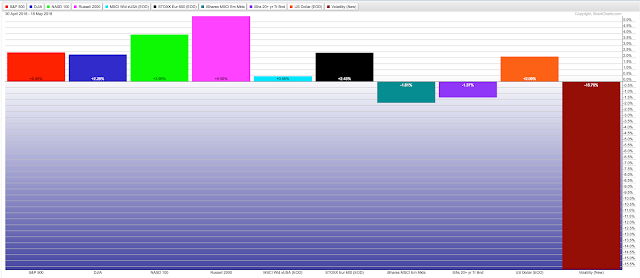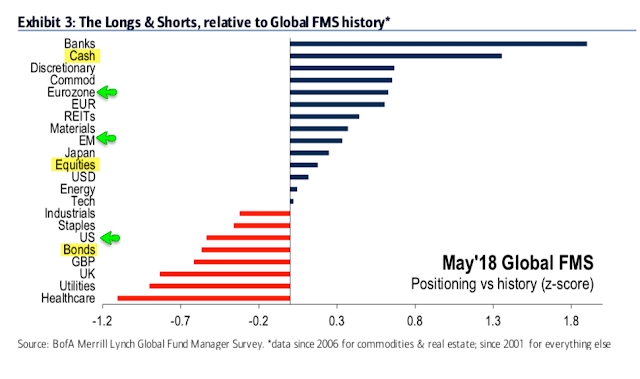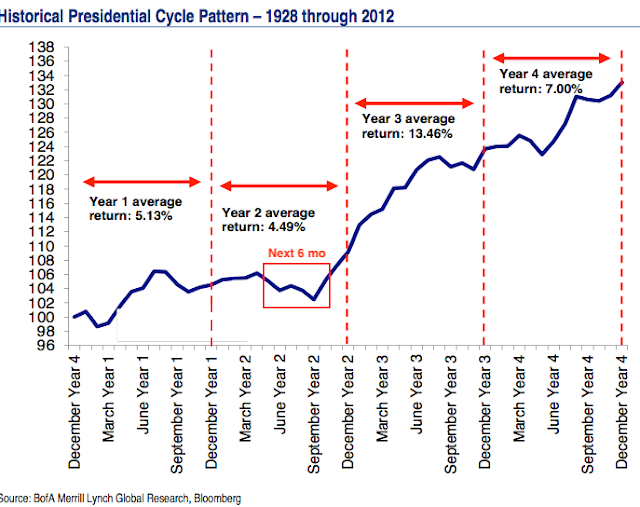Summary: Fund managers came into 2018 very bullish equities. Cash levels had fallen to the lowest level in 4 years. Allocations to global equities had risen to the highest level in nearly 3 years. Bond allocations were at a 4 year low. Our view at the time was that "this is a headwind to further gains" in equities. That post is
here.
Since then, global equity allocations have fallen and cash balances have risen. Investors are no longer at a bullish extreme, although the equity correction has not (yet) made them outright fearful.
In the past 9 months, US equities have outperformed Europe by 6% and the rest the world by 5%. Despite this, fund managers remain underweight the US. US equities should continue to outperform their global peers on a relative basis.
Fund managers' inflation expectations are near a 14 year high; in the past, this has corresponded with a fall in US 10 year yields in the months ahead. Commodity allocations are at a 6 year high.
* * *
Among the various ways of measuring investor sentiment, the Bank of America Merrill Lynch (BAML) survey of global fund managers is one of the better as the results reflect how managers are allocated in various asset classes. These managers oversee a combined $600b in assets. Our sincere gratitude to BAML for the use of this data.
The data should be viewed mostly from a contrarian perspective; that is, when equities fall in price, allocations to cash go higher and allocations to equities go lower as investors become bearish, setting up a buy signal. When prices rise, the opposite occurs, setting up a sell signal. We did a recap of this pattern in December 2014 (
post).
Let's review the highlights from the past month.
Overall: Relative to history, fund managers are
overweight cash and commodities, underweight bonds and neutral equities. Enlarge any image by clicking on it.
Within equities, the US is significantly underweight while Europe, Japan and emerging markets are all overweight.
A pure contrarian would overweight US equities relative to Europe and emerging markets and underweight cash.







